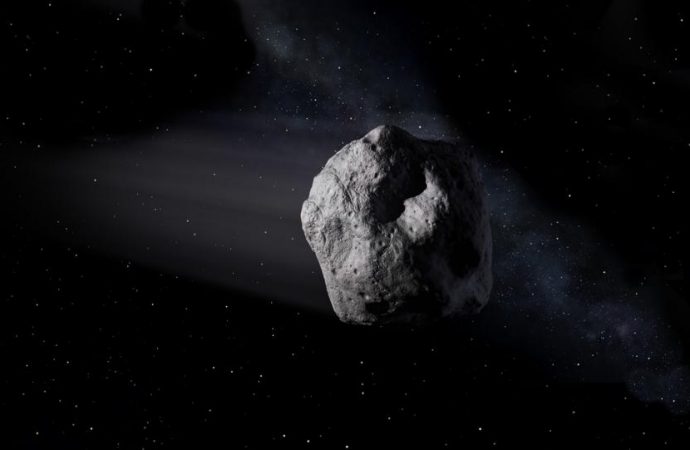We’ve had plenty of near-misses in the year of 2017, and now we’re expecting more meteors??
We live in a busy neighborhood: Astronomers spotted just over 2,000 never-before-seen asteroids passing within almost 280 million miles of Earth over the course of last year. That brings the total number of so-called near-Earth asteroids identified to 17,446, with the vast majority of those being spotted beginning in the mid 1990s. And scientists are confident they will spend this year giving even more space rocks names, numbers and pathways as they hurtle through our solar system.
That may sound scary, but instead, try to find it comforting. After all, those asteroids have always been there and will always be there. All that’s changing is astronomers are keeping their eyes on them. That means if any looks poised to cause trouble—which none do for the foreseeable future—we’ll know in time to do something about it. And in the meantime, astronomers can work on answering some of our big questions about how the solar system came to be.
“This is not a reflection of an increased number of asteroids passing by,” Paul Chodas, manager of the Center for Near-Earth Object Studies at NASA’s Jet Propulsion Laboratory, told Newsweek. “The increase in discoveries reflects our increased capabilities,” like our ability to detect fainter objects, thanks to more powerful telescopes, and to watch more of the sky at once.
Another piece of good news buried in the statistics is that scientists are slowly failing to find any more asteroids that are larger than a kilometer across, or about 0.6 miles. “Try as we may, even searching with better and better telescopes, we’re not finding more asteroids [of this size],” Chodas said. That means scientists think they’ve found more than 95 percent of that category. “We’ve already found the vast majority of the large ones, and that’s good news because those are the ones that could lead to a global catastrophe if those should hit,” he said. The ones that are left to find, he says, are likely tucked away in orbits that are difficult to search.
The middle-size category, (asteroids that are larger than 140 meters, or 460 feet, across) is where astronomers are really focusing their efforts right now. At that size, a reasonably large chunk of an asteroid could still make it through Earth’s protective atmosphere to the surface. “It could certainly lead to regional catastrophe wherever it might hit,” Chodas said of an object that size. Right now, scientists have identified about 8,000 near-Earth asteroids of this size, but they think there are about 20,000 more left to be spotted, which is why they’re so focused on scanning for asteroids.
Congress actually ordered the agency back in 2005 to get to work finding these medium-sized asteroids, but funding shortages have hampered astronomers’ efforts. The two projects responsible for the most new asteroid identifications in 2017 were the Pan-STARRS telescope in Hawaii and the Catalina Sky Survey in Arizona, which both got technological upgrades recently.
2018 is expected to be a big year for the ATLAS project, also based in Hawaii, which is just getting up and running but can study the whole sky every night. The next major initiative expected to do lots of asteroid-spotting is the Large Synoptic Survey Telescope currently under construction, but that’s still a few years away from opening its eyes.
But Chodas says that many of the newly spotted asteroids are nothing to raise eyebrows about—many are pretty small, and only found by chance during astronomers’ hunt for larger rocks. “Our goal is not to find these little ones, because they’re not hazardous really,” Chodas said of asteroids like 2017 YD7, which flew by Earth on Tuesday night. “Asteroids of that size pass by the Earth at this distance all the time statistically.”
The only difference is now, thanks to monitoring, we actually know about them, NASA enters them in databases, and scientists calculate their trajectories. And NASA has no plans to stop doing that, since it’s this process that would alert us if there actually were an asteroid that could cause us harm—and potentially give us the chance to do something about it, like try to nudge it off course, away from Earth.
Every single new asteroid scientists spot is a potential target for further observations, said Lance Benner, a NASA astronomer who uses radar technology to study passing asteroids. He and his colleagues keep a look out for both newly discovered and returning asteroids and try to pin down their size, shape, what they’re made of, and other characteristics that will help scientists understand asteroids better.
Radar observations bounce powerful signals off the rock and look for what light comes back, rather than relying on reflections that occur naturally. “In principle, we could see a golf ball at the distance of the moon,” Benner said. “Not that we actually look for golf balls at that distance.” He and his colleagues have already arranged to study 40 asteroids with this technique over the course of 2018.
But of course, that tally doesn’t include all the new asteroids that will be identified for the first time ever this year.
Source: Newsweek.com



































Leave a Comment
You must be logged in to post a comment.